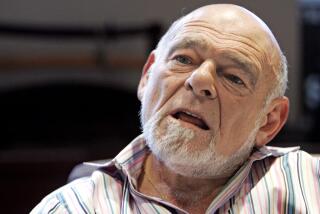Gamble on Buying a Loser for Tax Credits Pays Off
- Share via
Beverly Hills venture capitalist Jack Salzberg had one objective when he was looking to invest in a company back in 1983. Buy the biggest loser he could find.
Micro-Z Corp. in Monrovia was perfect. The company’s computerized hotel reservations systems had never sold very well, and its losses piled up. In March, 1983, the company filed for Chapter 11 bankruptcy protection from creditors because its liabilities exceeded assets by $5 million.
Salzberg was so excited about Micro-Z’s future that he loaned the company about $500,000 to get it through bankruptcy proceedings.
Why? Salzberg saw that Micro-Z had $16.5 million worth of net loss carry-forwards--or tax credits--that could be applied against future earnings. Salzberg planned to buy other companies in a similar business and then use Micro-Z’s carry-forwards to shelter the income of those profitable companies.
It was a risky business strategy, but it has paid off for Salzberg.
Salzberg became the company’s chairman and president and renamed it Brajdas Corp., which is based in Woodland Hills. He bought two electronic components distributors in 1985.
10,000 Customers
The company sells connectors, sockets, switches and semiconductors to small- and medium-sized manufacturers of computer and medical equipment. Brajdas has 10,000 customers, most of them in the Western states.
And the profits have started to build. For the year that ended February, 1988, Brajdas’ net income doubled to $1.9 million on a 40% increase in sales to $47.5 million. Brajdas also has $12.5 million left of tax credits to use.
But in August, Salzberg sold off 300,000 shares of the company’s stock for a pretax profit of approximately $2 million.
Donald Zimmerman, a San Francisco financier and Salzberg’s partner, who bought into Brajdas in 1985, bought Salzberg’s stock and now serves as Brajdas’ president and chairman. (Salzberg still owns 5.7% of the company.)
Why did Salzberg sell? “We had a chance to accomplish a capital gain--a nice gain--and we had more investments to make. It was an opportune time,” Salzberg said.
Since Salzberg’s resignation the stock has fallen from $7.25 to a Monday closing price of $6.50 per share. But Zimmerman plays down Salzberg’s defection.
“His involvement in Brajdas was basically as an investor,” he said. “I’m betting more on the company’s success.”
Ranked 22nd
Eric Lundquist, editor of Electronic Buyers’ News, a Long Island, N.Y., trade magazine, says Brajdas is “one of the fastest-growing distributors in the country,” ranking Brajdas 22nd among all electronic distributors by 1987 sales volume.
The task for Brajdas is to keep up the momentum and Chief Financial Officer Allan Klein, a holdover from the Micro-Z days, concedes that a slowdown is likely.
“It would be hard for me to say that we’re going to continue this for the next 2 to 3 to 4 years without acquisitions,” he said. Klein runs the daily operations of the company while Zimmerman works out of his San Francisco office.
While Brajdas’ growth is impressive, there are signs it won’t last. The company accumulated a lot of debt building up its inventory, and its debt is running about $20 million.
In June, the company has to make a lump sum payment of $1 million.
“We are still a fairly leveraged company,” Klein said.
In the meantime, the boom in electronics sales may come to an end in 1989, according to some analysts on Wall Street.
“Certainly there is going to be a moderation,” said Richard Jacobs, editor of the National Electronics Distributor Assn. Market Letter, based in New York.
Brajdas moved out of Salzberg’s Beverly Hills offices into its own corporate headquarters in Woodland Hills in September.
His company, Klein said, wants to drum up business in the San Fernando Valley-area’s growing electronics industry.
“We see fairly soon that this market for us will be close to $1 million a month,” he said.
More to Read
Inside the business of entertainment
The Wide Shot brings you news, analysis and insights on everything from streaming wars to production — and what it all means for the future.
You may occasionally receive promotional content from the Los Angeles Times.









